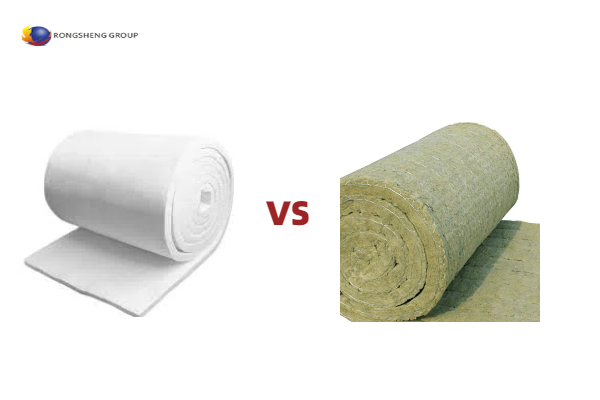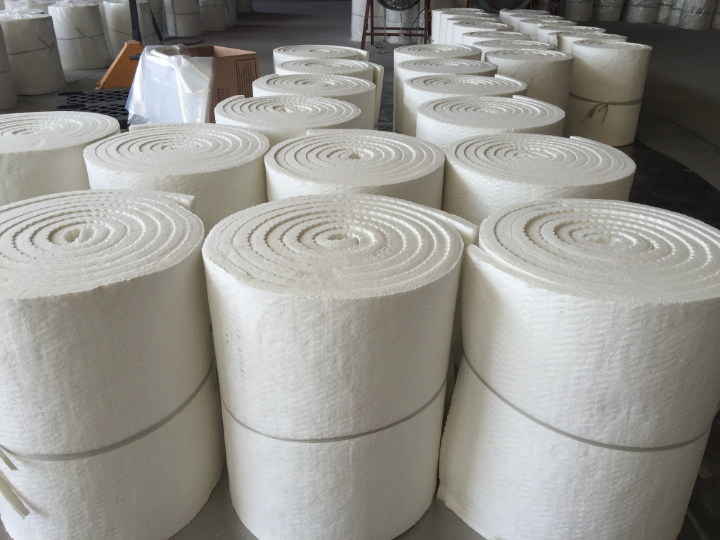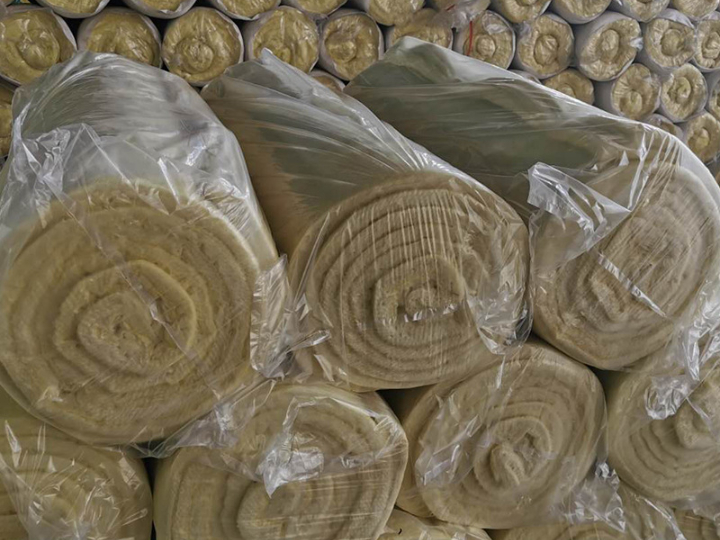Ceramic insulation wool and rock wool both have the characteristics of high-temperature resistance, and can also be used in single crystal furnaces, metallurgical casting, petroleum cracking, and ablation-resistant and high-temperature resistant insulation materials; sound-absorbing materials and insulation materials for buildings and equipment; so what is the difference between the two?

The difference between ceramic insulation wool and rock wool blanket
Quá trình sản xuất khác nhau

Ceramic fiber loose wool is made by melting high-purity clay clinker, alumina powder, silica powder, chrome sand, and other raw materials at high temperatures in an industrial electric furnace to form a fluid. Then it is blown by compressed air or spun by a spinning machine into fibers, and then collected by a cotton collector to form ceramic fiber wool. The fiber cotton can be further processed into fiber blankets, boards, paper, cloth, ropes, and other products. Ceramic fiber is a highly efficient thermal insulation material with lightweight, high strength, oxidation resistance, độ dẫn nhiệt thấp, good softness, chống ăn mòn, công suất nhiệt nhỏ, and sound insulation.
Rock wool is an inorganic fiber made from natural rocks such as basalt, gabbro, dolomite, iron ore, bauxite, vân vân., through high-temperature melting and fiberization. The fiber can be processed into various products such as boards, tubes, felts, belts, vân vân., which can be used for insulation, fire prevention, sound absorption, earthquake resistance, vân vân. of buildings and industrial equipment, pipelines, kilns, vân vân. Rock wool board, rock wool tube, rock wool felt.
The difference in performance
Ceramic fiber wool has advantages in long service life and high fiber toughness. Ceramic fiber wool has lower thermal conductivity. Ngoài ra, the highest operating temperature of ceramic fiber wool is above 1000 độ. Commonly used types are 1050 Và 1230, while the highest operating temperature of rock wool is about 600 độ.

Difference in usage
Ceramic insulation wool can be used for low-temperature insulation at 200 độ, medium-temperature insulation at 500 độ, and fireproof insulation at 1000 độ. Rock wool is generally used for insulation at around 500 degrees and mostly for insulation of thermal pipes or power equipment.
 tập đoàn rongsheng
tập đoàn rongsheng

Wechat
Quét mã QR bằng wechat